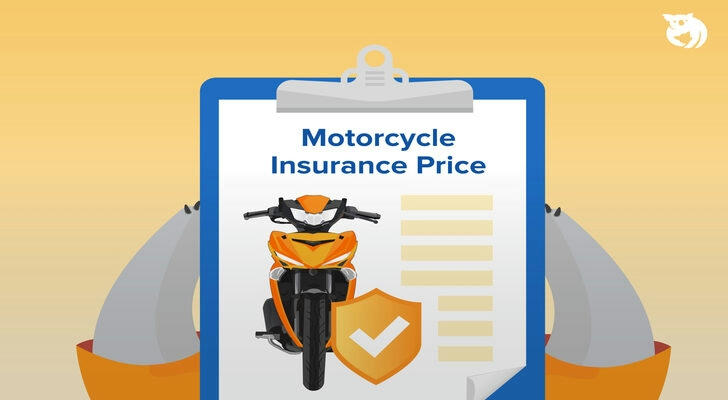Motorcycle Insurance in the U.S.: A Complete Guide
Whether you're a seasoned rider or just starting your journey into the world of motorcycles, understanding motorcycle insurance is crucial. This guide will walk you through the essentials, helping you secure the best coverage at the most affordable rates.

The Basics of Motorcycle Insurance
Motorcycle insurance isn’t just a legal necessity—it’s a financial safety net for accidents, theft, or damage. The core components of motorcycle insurance include:
- Liability Coverage: Mandatory in most states, it covers bodily injury and property damage you may cause to others.
- Collision Coverage: Helps repair or replace your motorcycle if it’s damaged in an accident.
- Comprehensive Coverage: Protects against non-collision incidents like theft, fire, or vandalism.
- Uninsured/Underinsured Motorist Coverage: Covers your expenses if the at-fault driver lacks sufficient insurance.
To find the right policy, compare quotes from multiple providers. Websites like Progressive and GEICO offer user-friendly calculators where you can input your bike’s make, model, and riding history to get personalized quotes. These tools help you understand how factors like your location, age, and motorcycle type affect your premiums. For example, newer bikes or those with larger engines often come with higher premiums.
How to Find Affordable Motorcycle Insurance
While cost is a key factor, don’t compromise on coverage quality to save money. Start by requesting quotes from several providers. Online platforms like Compare.com and The Zebra allow you to compare motorcycle insurance quotes, filtering results by coverage levels, deductibles, and other preferences to find a policy that fits your budget.
Look for discounts to further reduce costs. Many insurers offer discounts for completing motorcycle safety courses, bundling policies, or maintaining a clean riding record. For example, State Farm and Allstate provide significant discounts for riders who complete approved safety courses. Increasing your deductible can also lower premiums, but make sure you can afford the deductible if you need to file a claim.

Getting Accurate Motorcycle Insurance Quotes
Accurate quotes require detailed information about your motorcycle and riding habits. Insurers typically ask for your bike’s make, model, year, and any modifications, as well as personal details like your age, riding experience, and location. A clean driving record can also help lower your premiums.
Use online calculators from insurers like Nationwide and Liberty Mutual to get accurate estimates. These tools guide you through the quote process, ensuring all relevant factors are considered. Consulting an insurance agent can also be beneficial, as they can provide personalized advice and help you uncover additional discounts or coverage options.
Comparing Motorcycle Insurance Quotes Locally
When comparing quotes, consider both local and national providers. Local insurers may offer competitive rates or personalized service that larger companies can’t match. Check online reviews on platforms like Yelp and Google Reviews to learn about other riders’ experiences with local insurers.
Visiting local insurance offices or speaking directly with agents can also yield tailored advice and access to special rates or promotions. Building a relationship with a local agent can be advantageous if you need to file a claim or adjust your coverage in the future.
Tips to Lower Motorcycle Insurance Costs
Here are some practical strategies to reduce your motorcycle insurance costs without sacrificing coverage:
- Secure Storage: Store your bike in a garage or storage unit to lower the risk of theft or damage. Many insurers offer discounts for bikes kept in secure locations.
- Anti-Theft Devices: Install alarms or GPS trackers to qualify for additional discounts. For example, Progressive offers discounts for bikes equipped with anti-theft devices.
- Review Coverage Regularly: As your bike ages, consider dropping comprehensive or collision coverage if the cost outweighs the bike’s value. Always maintain at least the minimum liability coverage required by law.
- Reduce Mileage: Riding fewer miles annually can lower your premiums. Track your mileage and report it accurately to your insurer to take advantage of this discount.
Using Motorcycle Insurance Calculators
Motorcycle insurance calculators are invaluable tools for finding the right coverage at the best price. Websites like Esurance and Dairyland offer calculators that consider factors like your bike’s make and model, riding experience, and location to provide estimated premiums.
These calculators save time and help you understand how different factors influence your insurance costs. For instance, if you’re considering buying a new motorcycle, you can compare insurance costs for different models before making a decision. They also allow you to adjust coverage levels and deductibles to see how these changes affect your premiums.

Key Factors That Affect Motorcycle Insurance Rates
Several factors influence motorcycle insurance rates:
- Motorcycle Type: Sport bikes typically have higher premiums due to their speed and higher accident risk, while touring bikes and cruisers often have lower rates.
- Age and Experience: Younger, less experienced riders usually face higher premiums.
- Location: Urban areas with higher traffic and theft rates typically have higher premiums than rural areas.
- Driving Record: A clean record with no accidents or violations can significantly lower your premiums.
Conclusion
Finding the right motorcycle insurance in the U.S. doesn’t have to be overwhelming. By understanding the basics, comparing quotes, using calculators, and implementing cost-saving strategies, you can ensure your motorcycle adventures are both exciting and financially secure. Remember, the cheapest policy isn’t always the best—prioritize comprehensive coverage to protect yourself and your bike on every ride.
